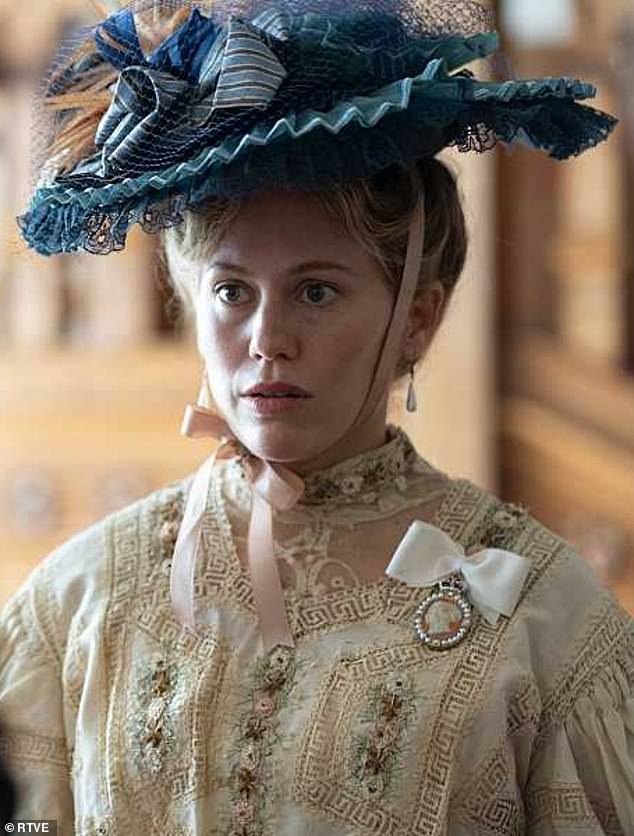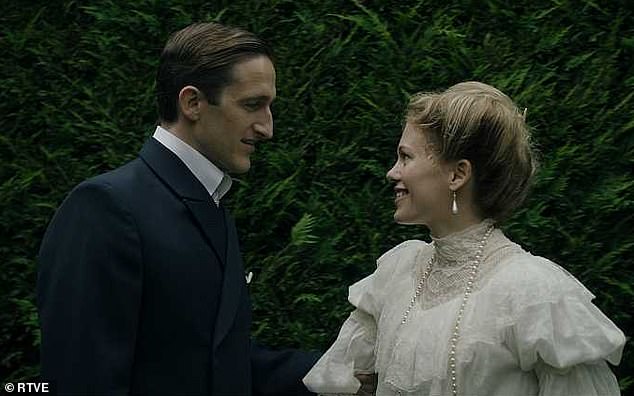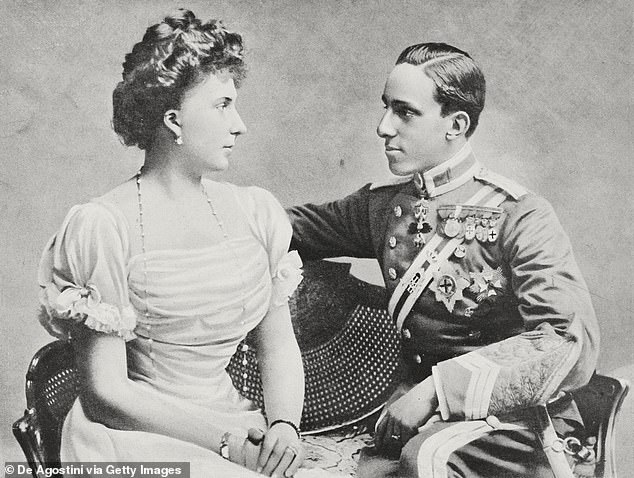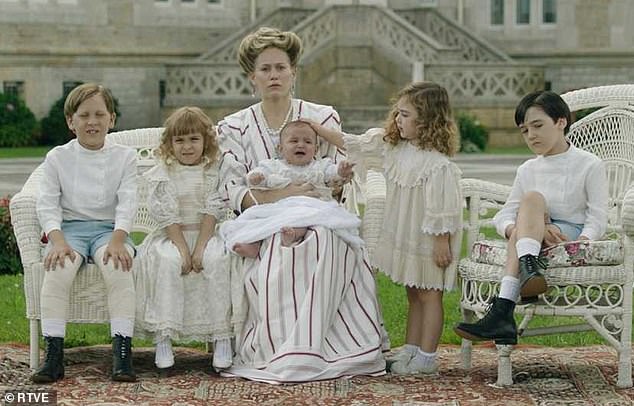Queen Victoria’s granddaughter gets The Crown treatment! Queen Victoria Eugenia and King Alfonso XIII of Spain’s turbulent love story that saw them nearly killed by a bomb on their wedding day will be explored in new series
Following in the footsteps of the British royals, the Spanish royal family will receive their own on-screen adaptation, Ena.
Filmed by Spanish broadcaster RTVE, the biographical drama series will retell the life of Victoria Eugenia de Battenberg, Queen of Spain, and her tumultuous marriage to Alfonso XIII between 31 May 1906 and 14 April 1931.
The drama explores the life of Victoria Eugenia, known as Ena to close friends and family, who was born in Balmoral Castle, Scotland, to Henry of Battenberg and Princess Beatrice, the youngest daughter of Queen Victoria and Prince Albert.
Filming has begun for the six-episode series at the grand Magdalena Palace in Santander, where the monarch lived during her summers, according to told.
The brilliant adaptation, featuring only female directors Anaïs Pareto and Estel Díaz, is based on the historical novel Ena by Pilar Eyre.

The Spanish royal family are to receive their own TV adaptation, Ena, based on the life of Queen Victoria Eugenia of Spain, as played by Kimberley Tell (pictured)
The life of Victoria Eugenia, who will be played by the Spanish actress Kimberley Tell, was far from uncomplicated. The series will depict Victoria’s public and private struggles, including two world wars, a civil war and the Great Spanish Flu.
Drama has followed the royal couple from the beginning of their marriage. On their wedding day, May 31, 1906, a terrorist attack took place, with the intention of killing the newlyweds.
During the royal procession, a bomb disguised as a bouquet of flowers was thrown from a hotel balcony directly at the royal carriage by Matteu Morrol, who wished to spark a revolution.
Fortunately, the royal couple escaped injury, but hundreds faced damage on their special day.
Tragedy struck when the royal couple welcomed their children.
The mother of seven discovered she was a carrier of hemophilia through her grandmother, Queen Victoria, which she passed on to her eldest and youngest sons, according to Royal Collection Trust.
The health problem, which prevents blood from clotting properly, built up tension in the royal marriage and led to the eventual breakdown of their union, according to Royal Watcher.
After the split, the royal faced a series of cheating scandals on behalf of her husband, who will be played by Joan Amargos.

The show will follow the tragic love life of Victoria Eugenia and her husband, King Alfonso XIII, played by Joan Amargos (pictured left)

The royals have faced a series of cheating scandals, as well as two world wars, a civil war and the Great Spanish Flu. Here are the royal couple photos on June 10, 1906
Regardless, the British-born queen threw herself into her role, promoting education and helping the less fortunate, according to Unofficial royalty.
Soon after, in 1931, the royal family went into exile after the establishment of the Second Spanish Republic.
From then on, the couple traveled to France and Italy before finally going their separate ways.
Initially, Victoria settled in 34 Porchester Terrace, London, to be close to her mother during the early days of the separation.
But despite the split, the mother of seven traveled to Alfonso’s side on his deathbed in Italy in 1941.

The Spanish royal, who had a total of seven children, was born in Balmoral Castle, Scotland, to Henry of Battenberg and Princess Beatrice, the youngest daughter of Queen Victoria and Prince Albert
Victoria eventually settled in Lausanne, Switzerland after being forced to flee Italy after Mussolini’s government accused her of espionage.
Despite her relocation, Ena continued to enjoy a busy social life and spent much of her time with her family.
On April 15, 1985, at the age of 81, Victoria Eugenia died in her home after failing health.
Discussing the adaptation, Javier Olivares, the author of the series, said: ‘Ena is the portrait of historical moments that seem distant, but are not so distant, because without them we would not understand the times we live in now. not.
The adaptation follows several series of European on-screen royalty, including The Crown.
Gerardo Iracheta, an executive producer of the show, seemingly nodded to this influence on Ena.
Speaking to verTele, he said: ‘This series shows that the history of Spain interests the public and, treated well, can be an inexhaustible source of top quality fiction, as the example of other European countries shows us.’
Although the premiere date is unknown, filming is believed to continue until the end of December 2023.
